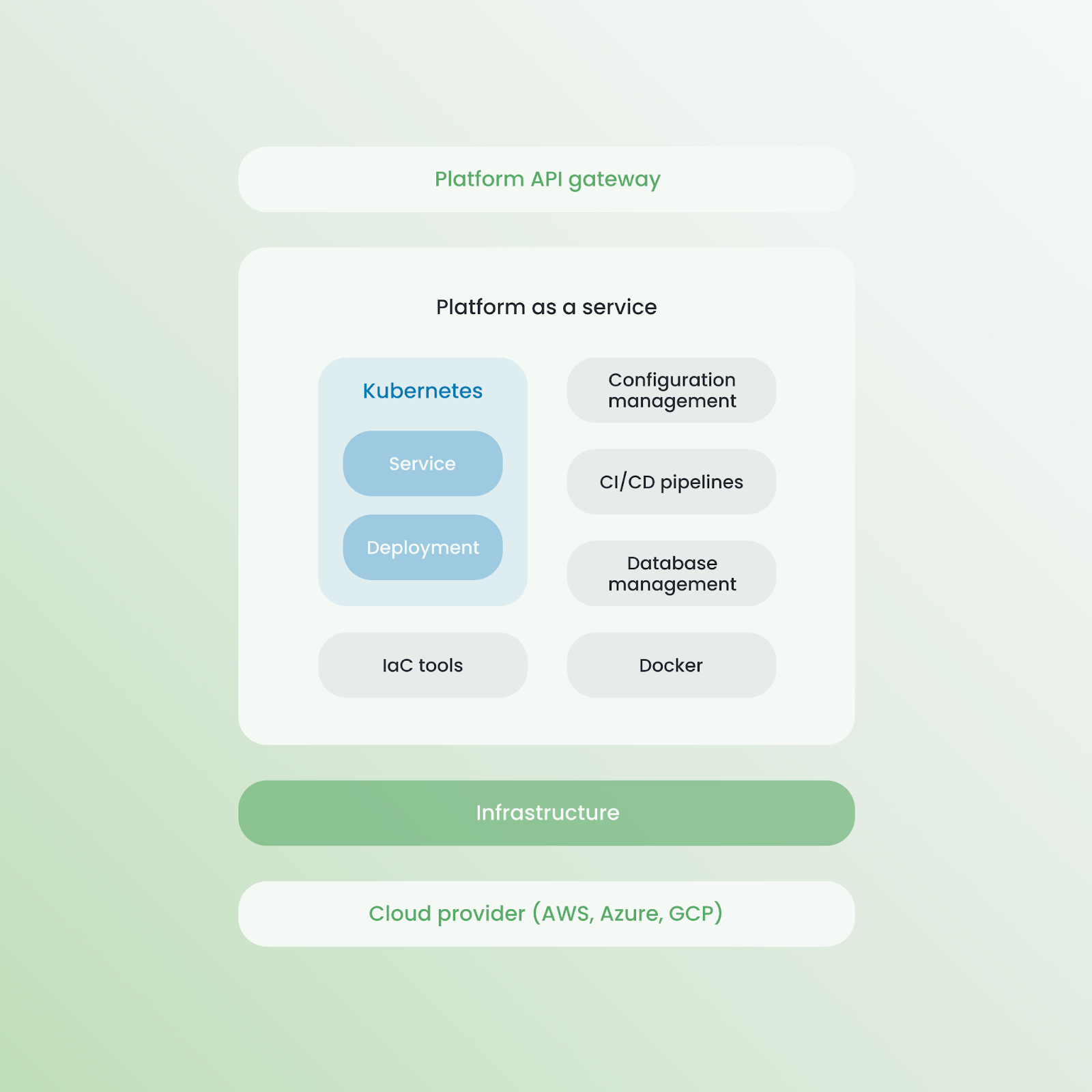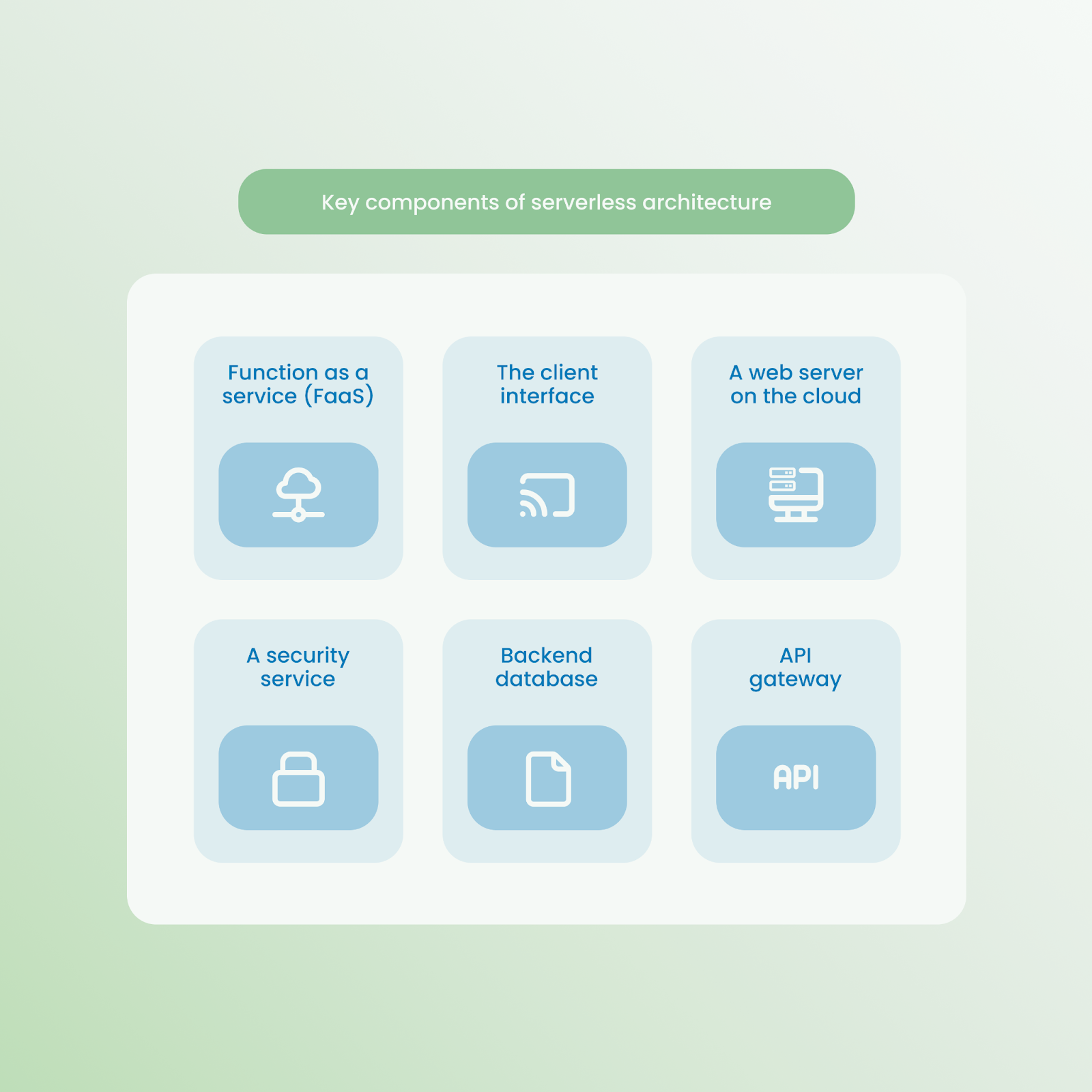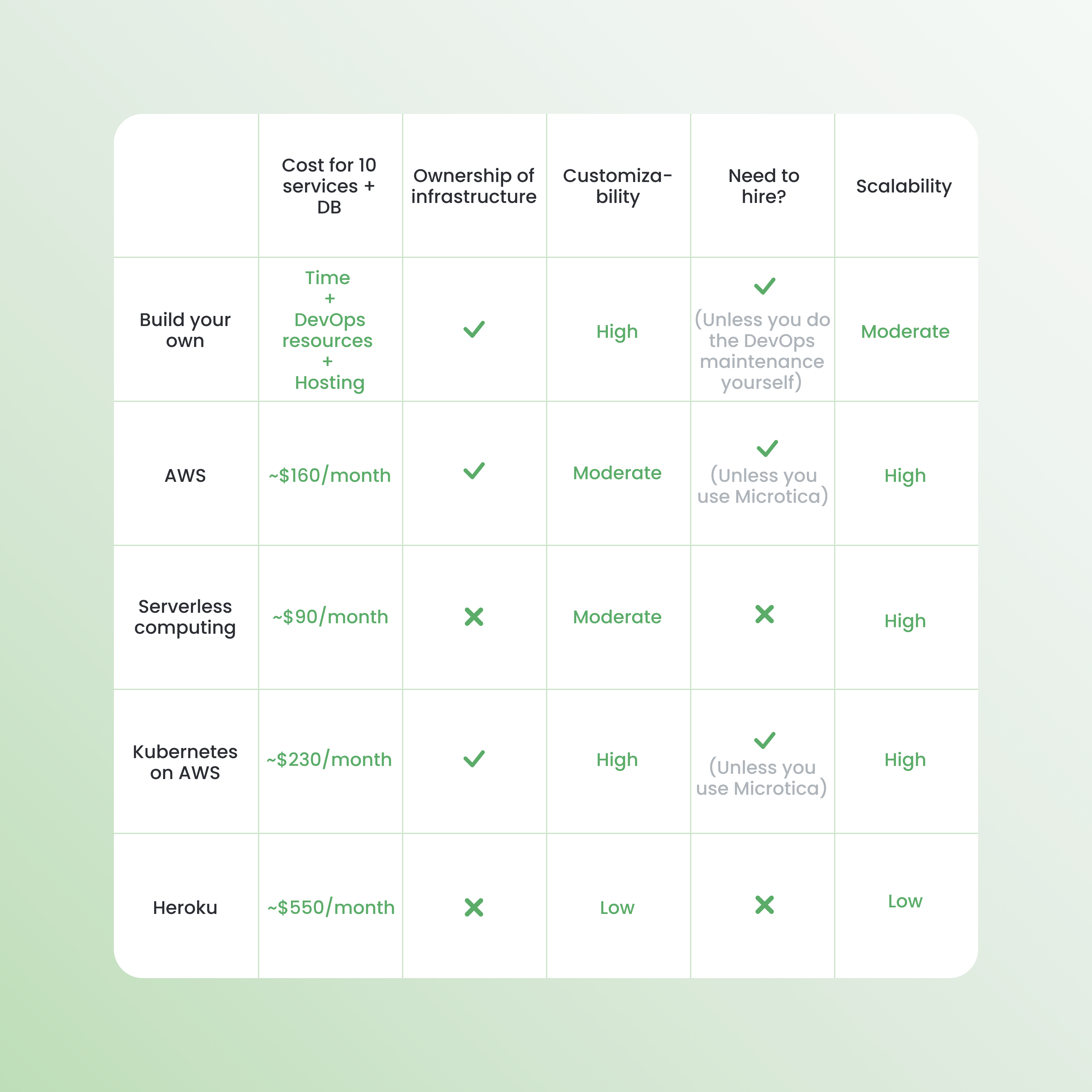4 Alternatives To Heroku With Lower Costs
 Marija
Marija
Huge operating costs are one of the most significant disadvantages that Heroku users experience. They start out small for startups, but as soon as serious resources are needed, costs pile up pretty quickly.
The moment your app starts scaling and your business begins to grow, is exactly when you should think about moving on from Heroku to gain more control over your infrastructure and applications data.
Heroku simply isn’t priced for ambitious entrepreneurs who want to get their skin in the game. Luckily, we have you covered.
Here are some alternatives you can implement to reduce your Heroku costs.
1. Build Your Own Heroku

Instead of paying for Heroku, you can build your own Heroku-like platform that’s better tailored to your business needs.
Instead of paying for Heroku, you can build your own Heroku-like platform that’s better tailored to your business needs.
Personally building your own platform to replace Heroku gives you full control over what kind of features and accessibility you want to have for your business. This will be fully custom to you (since you’re building it), and you’ll be able to fit it to your needs perfectly.
All the tools you need for this are totally free, like an HTTP web server Nginx for routing requests, something like Docker for containerizing applications, and a few other free components.
In addition, building your own platform is scalable. As your business grows, so will your computational requirements. And since you’re the one who built your infrastructure, you’ll be able to scale it out as necessary. This ensures that your expectations are met regardless of how large your business gets, with no sacrifice to cost.
The drawback of this option is that it takes months. You’ll find yourself taking forever to plan, design, build, start again from scratch, and launch your own platform. And as a business owner, you don’t have time to spend on personally building the infrastructure for your business to exist, as opposed to spending time working on your business.
So without extensive DevOps knowledge, and a LOT of time on your hands, this isn’t really a viable option for many business owners who want the simplicity Heroku provides.
2. Move to AWS
Moving to AWS can offer many commodities for businesses in different stages, because of its pay-per-use pricing.
Sure. At the early stages of your startup, Heroku is often the cheapest and easiest option to deploy apps for your business.
However, as you scale your business, you’ll find that AWS becomes increasingly cheaper than Heroku as it has a very flexible pricing structure, accommodating much better to your computational demands. In the long run, you’ll always be cutting costs by switching to AWS.
A standard plan for a common web application on Heroku costs $0.06/hour, whereas AWS’ starting plan costs $0.013/hour. Which is almost one-fifth of the price.
The problem with AWS is the lack of a Heroku-easy experience. As it is a bare-bones server, the deployment process on AWS is far more complicated than on Heroku, requiring you to have a dedicated DevOps engineer to configure and manage your infrastructure.
But with platforms like Microtica, you can simplify the complex deployment process of AWS to create the Heroku-like experience you’re looking for. Including the actual migration from Heroku to AWS.
Using production-ready AWS resources allows you to build infrastructure and deploy apps as fast as possible, without ever opening the console. So the complexities that come with AWS aren’t really a problem.
Additionally with AWS, you have ownership over your infrastructure without having to build it yourself. This means total control over your work environment, without any third parties involved.
3. Go Serverless

Another strong option is going “serverless”, which is where you purchase your backend services from a vendor. This is a very scalable alternative, as your server is entirely managed by a third-party vendor who only charges you for the server space you use.
Although going "serverless" does in fact use servers, the servers are never your problem. Your vendor takes care of overseeing them and scaling them as necessary.
With this option you’ll no longer need an engineer, minimizing your costs on DevOps. And you’ll also only pay for the server space you’re using, as the server automatically scales up as needed. So this will cut costs even more.
But the most amazing part about going serverless is that code only runs when backend functions are needed. You never pay for more than you’re using.
Imagine if the post office could magically add and remove delivery vehicles at will, expanding its fleet size when mail volume increases (for example, right before Christmas), and reducing it when fewer deliveries are required. This is essentially what serverless computing does for you.
But as with everything, there are trade-offs. The primary trade-offs of serverless computing involve security concerns and process run times.
When you trust a vendor to manage your backend processes, you can’t really have that much flexibility when it comes to security configurations. This becomes a problem when you’re deploying apps that handle personal or sensitive data, and you need to add some additional security guardrails. Since you’re often using a provided server, you can’t know the security configurations available there, as it’s a closed system for you. This is a small risk for common apps to consider.
Furthermore, if you’re using a server for long-running processes, serverless computing becomes expensive. Since serverless vendors charge for the amount of time you’re running code, deploying apps that run 24/7 is often not worth the cost. So if you’re deploying apps that are intended to run for long periods, it’s best to look elsewhere.
4. Move to Kubernetes
Kubernetes is one of the most popular cloud infrastructure solutions among developers because it offers you an abstraction layer over any underlying cloud provider. This is great because you don’t need to learn the intricacies of different clouds, and you can deploy on multiple clouds based on the services and utilities your applications need.
When you scale to a certain level, Heroku charges you 5 times the amount of money you would pay AWS for the same infrastructure. This is when switching to Kubernetes becomes a cheaper and easier option. When you choose Kubernetes, you’re paying directly to the cloud provider for hosting, instead of paying the expensive price of Heroku being your middleman.
Eventually, the apps you deploy will be too complex for Heroku to handle.
A common problem for Heroku users is the lack of networking and orchestration capabilities, especially when apps have multiple different sub-apps and microservices. For example, YouTube’s streaming platform has a browsing app to navigate the video library; a recommendation engine needs to decide which videos to display; a search engine so users can find videos manually; and finally, a streaming service that actually plays the video once you make your decision.
All those different services need to interact with one another, scale independently, and come together to form a complete user experience. This kind of app orchestration is where Kubernetes dominates.
However, Kubernetes can have quite the learning curve. It can be challenging to maintain the whole infrastructure on your own, as well as monitor and debug cloud-native applications. And it’s often recommended to have an expert with a more in-depth knowledge of K8s on your team, which can be expensive and hard to find.
That’s why we use Kubernetes in combination with a managed-Kubernetes solution, making this one of the best alternatives to Heroku.
To simplify the process of setting up a Kubernetes infrastructure, there are affordable, complete solutions like Microtica that allow you to deploy and monitor services from an integrated Kubernetes Dashboard. This means you won’t need an expert on your team anymore, so you won’t waste time configuring/maintaining your server (or paying someone to do it). In our docs you’ll find a full guide on setting up a new Kubernetes cluster, as well as connecting an existing cluster.
Conclusion

Once your business starts to scale past the initial stages, with more users and higher computational requirements, Heroku becomes too expensive.
There are many ways to get around the operating costs of Heroku. Depending on the nature of your projects, the above solutions can match your needs quite affordably.
Building your own Heroku-like platform can be done, but takes months if you’re starting from scratch. And you simply don’t have time to build and design the infrastructure to deploy apps peacefully.
Moving to AWS is something to consider for those who are not in the early stages of their project anymore. As you grow your business, it’s clear that AWS can cost a fraction of the price compared to Heroku, with more features and customizability than ever.
For projects with irregular server usage, serverless computing can be an incredible solution - enabling you to deploy apps without having to hire a DevOps engineer.
And Kubernetes, in conjunction with a management solution, is one of the most popular solutions for developers who want to abstract the complexities of cloud providers. Especially for medium to larger businesses, Kubernetes can save you a lot of money over Heroku.
It’ll be up to you to decide which of these solutions best fits the requirements of your budget, team, and overall project scope.
If you're interested in finding out why Microtica is the right solution for migrating from Heroku to AWS read the following article.
Subscribe to my newsletter
Read articles from Marija directly inside your inbox. Subscribe to the newsletter, and don't miss out.
Written by

Marija
Marija
Co-founder, Software Developer and Technical Writer at @Microtica